Austria is not just white wines. Increasingly its red wines grab our attention. We have tasted wines from Neusiedlersee DAC in Burgenland in easternmost Austria. Lake Neusiedl has long been famous for its noble sweet wines. But red grapes also thrive by this shallow lake, zweigelt, not least; Austria’s very own grape. It gives wines with intensity and cherry fruit, sometimes with elegance, sometimes with power and body.
We associate Austria with white wines from grüner veltliner, by far the most cultivated grape in the country. It is mainly grown in Lower Austria (Niederösterreich), along the Danube, west of Vienna. But we are now heading to Burgenland, further east, on the border with Hungary. Here, in a dry climate with warm, beautiful summers, producers make exciting red wines.
This is a longer version of an article published on Forbes.com.
Austria has 48,000 hectares of vineyards. 13,300 hectares are in Burgenland, which is less than half of Lower Austria, the largest region, which has 28,000 hectares.
Burgenland is Austria’s easternmost wine region. There are five different areas of origin, so-called DAC: Mittelburgenland DAC, Neusiedlersee DAC, Eisenberg DAC, Leithaberg DAC, Rosalia DAC and Ruster Ausbruch DAC. Red grapes are grown throughout Burgenland. Austria’s red wines came into vogue in the 1990s. Then, they were most often blends. Now we see more and more single grape wines from zweigelt, blaufränkisch, st. laurent, pinot noir, merlot and others.
The red grape varieties
Zweigelt is a successful cross between blaufränkisch and sankt laurent, which was made in Austria in 1922. It was initially called rotburger because it is red and was born in Klosterneuburg. It was renamed zweigelt, after its creator, in 1975. It is now Austria’s most cultivated red grape, popular not least in Neusiedlersee DAC.
Zweigelt gives fruity wines with aromas of ripe cherries, plums and warm spices such as cloves. The wines are often dark in colour, sometimes elegant in style, sometimes powerful with plenty of tannins, and always with refreshing acidity.
Blaufränkisch, often tannic and full-bodied, is Austria’s second most grown red grape. It is the number one grape in Hungary, where it is also called kékfrankos. St. laurent is an exciting variety, a bit challenging to grow but often elegant in style and reminiscent of pinot noir.
Neusiedlersee DAC
With around 7,000 hectares, the Neusiedlersee DAC is the largest and most famous appellation (DAC) in Burgenland. Lake Neusiedli is a shallow lake; at its deepest, it is barely two meters. A small part of the lake is in Hungary. The lake and the surrounding area have long been a nature reserve and a popular haunt for bird watchers. The climate around the lake is mild, and the area has the largest number of sunny days in all of Austria. But cool nights ensure that the wines retain an excellent acidity, something we noticed during our tasting. The vineyards are on the eastern shore of the long narrow lake and also extend a bit northeast of the lake.
Zweigelt is the big star, and when Neusiedlersee DAC was created in 2012, it was decided that it would only apply to zweigelt for dry wines. There is also a Neusiedlersee DAC Reserve that requires fermentation in oak barrels, large or small, and 18 months of ageing.
Semi-sweet and sweet white wines may also use the designation Neusiedlersee DAC if they meet specific requirements.
Red wines with a grape other than zweigelt, as well as dry white wines, have Burgenland as their designation of origin.
Sweet wines
The climate around the lake is also suitable for sweet wines of various kinds. Thanks to the warm and humid autumn climate, you can make excellent beerenauslese and trockenbeerenauslese. The mists that develop around the shallow lake favour the development of the noble rot.
The sweet wines from Burgenland have been known for a long time. In the 17th century, the producers exported Ruster Ausbruch from the town of Rust on the western side of the lake.
A variety of grapes are used for the sweet wines, often welschriesling but also weissburgunder/pinot blanc, chardonnay, muskateller, scheurebe and muskat ottonel. The sweet wines can be semi-sweet (spätlese/auslese) or noble sweet (beerenauslese / trockenbeerenauslese). The semi-sweet ones are harvested late but usually without botrytis, and the noble sweets are made with botrytised grapes.
The semi-sweet Neusiedlersee DAC must have at least 45 grams of residual sugar. Their acidity is usually high. You can drink them as an aperitif and with cheese, but also with spicy food, sweet and sour sauces and the likes.
The tasting
The following producers participated:
- Allacher Vinum Pannonia
- Artisan Wines
- Gebrüder Nittnaus
- Georg Preisinger
- Hannes Reeh
- Johannes Münzenriede
- Keringer Massiv Wines
- Kummer Weine
- Markus Iro
- Moser Weine
- Preiner Wein
- Salzl Seewinkelhof
- Weingut Lentsch
- Weingut Pöckl
Dry white wines
Weissburgunder 2020 Trocken, Allacher Vinum Pannonia, Burgenland, Austria
Weissburgunder is German for pinot blanc. This is a pleasantly aromatic wine with aromas of pear, melon and white flowers. The nose is quite intense, and it is unusually full-bodied for a pinot blanc. The must ferments slowly for 16 days, and the wine is then aged on its lees with daily batonnage (stirring) to get some creaminess into the wine. (7.90 euros)
Grüner Veltliner 2020 Trocken, Kummer Weine, Burgenland, Austria
Austria’s famous white grape grüner veltliner is more in the background in Burgenland. But it does well here. This one has the typical white pepper aromas and a pleasant, distinct taste of white flowers, apples, citrus and a lovely freshness with an acidity of almost 6 grams per litre. Excellent wine. (5.90 euros)
White semi-sweet and sweet wines
Traminer Spätlese 2020, Preiner Wein, Neusiedlersee DAC, Austria
Aromatic with intense flavours. It feels less sweet, thanks to the high acidity. Floral aromas, citrus, and it reminded us also of a particular dessert with apples made in the oven with butter and spices. Alc. 11.5% (8 euros)
Weissburgunder Spätlese 2020 Kummer Weine, Neusiedlersee DAC, Austria
Aromas of ripe melon and apricots, light and fresh on the palate. Alc. 10%. A lovely acidity, 6.9 grams per litre.
Cuvée Beerenauslese 2017, Johannes Münzenriede, Neusiedlersee DAC, Austria
Intense, concentrated, ripe apricot, quite light in style but very tasty: spices, cinnamon, a little buttery. The alcohol content is 9% and the grapes are welschriesling, sämling (scheurebe) and grüner veltliner.
Welschriesling Beerenauslese, Artisan Wines, Neusiedlersee DAC, Austria
It is very sweet but also very fresh so the balance is excellent. Honey and marmalade from the botrytised grapes, a high viscosity. A superb wine with dessert, cheese or on its own. 9 % of alcohol.
Red wines from zweigelt
Zweigelt Reserve Ried Luckenwald 2018, Gebrüder Nittnaus, Neusiedlersee DAC Reserve, Austria
Dark, dense fruit, some oak and a pleasant spiciness. Relatively light in structure with a good balance. Highly enjoyable.
Zweigelt 2018, Weingut Pöckl, Neusiedlersee DAC Reserve, Austria
Very dark and dense colour. It is very concentrated and intense, with plenty of tannins and a fresh acidity. There’s cherry fruit and some oak aromas. It is full-bodied enough to be balanced but would benefit from being a little less concentrated. But I like it nevertheless.
Zweigelt 2019, Allacher Vinum Pannonia, Neusiedlersee DAC, Austria
Relatively light in colour. Pleasant light and fruity style but with good intensity in the aromas with ripe berries. It is structured with a rather soft finish.
Zweigelt 100 days 2018, Keringer Massiv Wines, Neusiedlersee DAC Reserve, Austria
Dense, concentrated fruit. Good length, acidity, spicy and herbal aromas. The wine has 100 days of extraction, which gives concentration and a slight dryness in the finish.
Zweigelt Ried Seeweingärten 2017, Weingut Lentsch, Neusiedlersee DAC Reserve, Austria
Light in style with a dominance of red berries and some oak on the nose. Fruity, spicy and elegant on the palate with intense aromas. Excellent.
Zweigelt 2019, Hannes Reeh, Neusiedlersee DAC, Austria
Fairly light in colour, with red berries, ripe fruit, almost overripe, but not too much, there’s a good balance and tannins for the structure. Quite enjoyable.
Zweigelt 2019, Salzl Seewinkelhof, Neusiedlersee DAC, Austria
Fresh and aromatic, lots of fruit, full-bodied, refreshing in taste. Excellent.
Zweigelt 2019, Moser Weine, Neusiedlersee DAC, Austria
Ripe, crushed cherries and prunes on the nose. Savoury, spicy on the palate, slightly volatile. (8.50 euros)
Artisan Wines 2018 Neusiedlersee DAC Reserve, Austria
Lots of dark cherries and red berries, good structure although light and elegant in style. Very balanced and very drinkable.
Other red wines
Sankt Laurent 2019, Ried Herrschaftswald, Markus Iro, Burgenland, Austria
Fresh herbs and dark fruit mingle with some oak aromas. It is refreshing on the palate. Pleasant and unpretentious.
Blaufränkisch Ried Ungerberg 2017, Georg Preisinger, Burgenland, Austria
Concentrated aromas, dense fruitiness, black currants, fresh herbs, sour cherries. It is structured with noticeable tannins and, in the finish, lovely refreshing fruit with even a mouthwatering acidity.
To end this tasting, we had something quite special: a sparkling red zweigelt.
Reehbellion Zweigelt Schaumwein, Hannes Reeh, Austria
This slightly odd sparkling wine with added carbon dioxide has a really dark colour and a lot of foam when you pour it. It is packed with dark fruit; it’s dry and quite structured. A versatile variety, zweigelt.



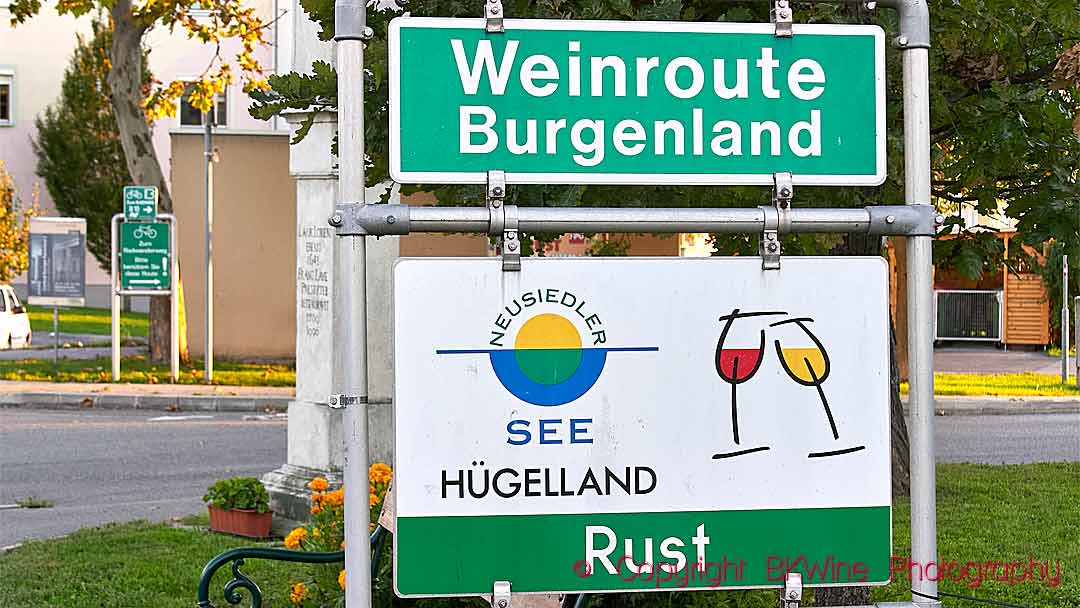
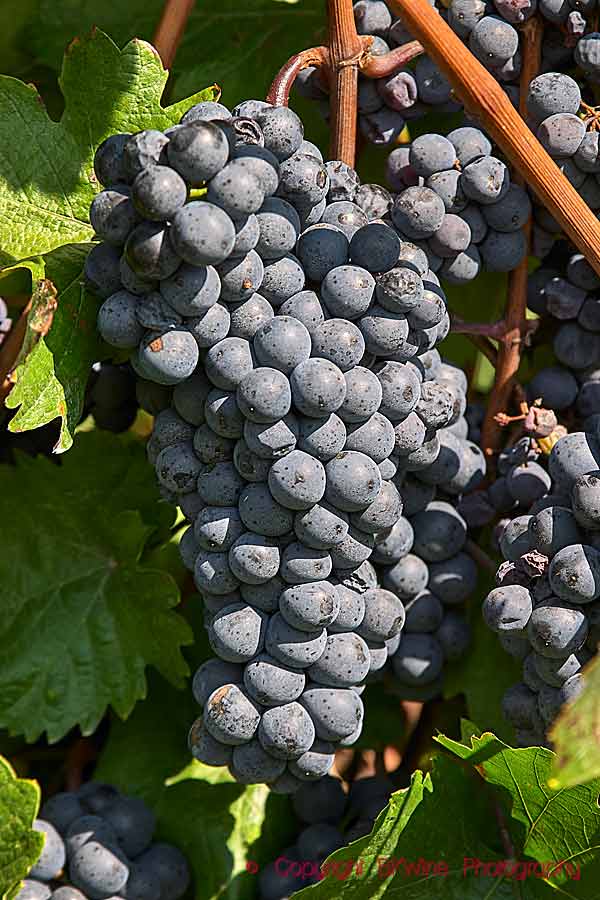

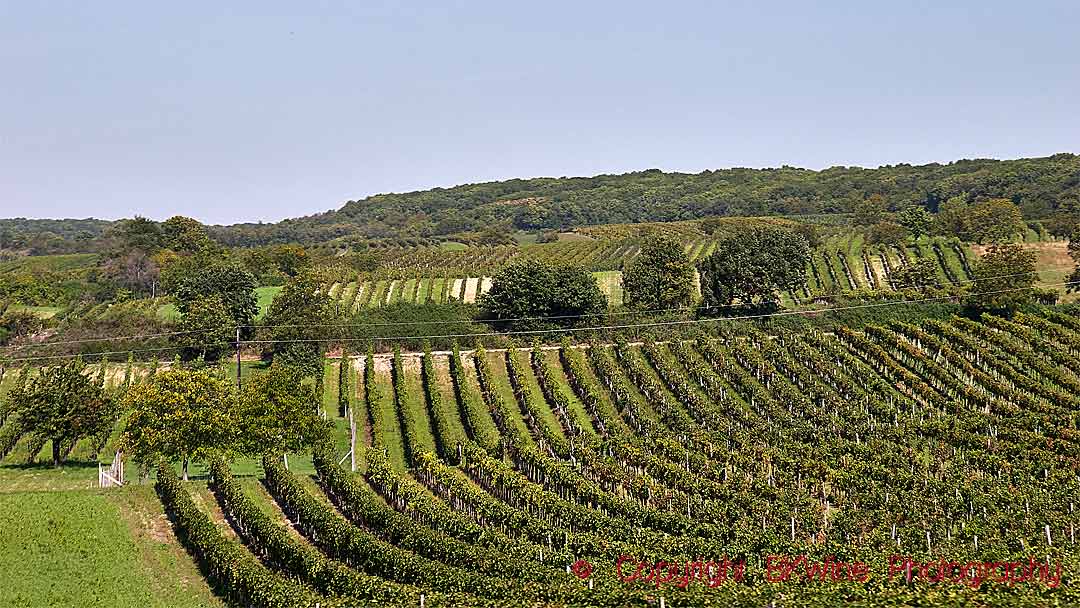
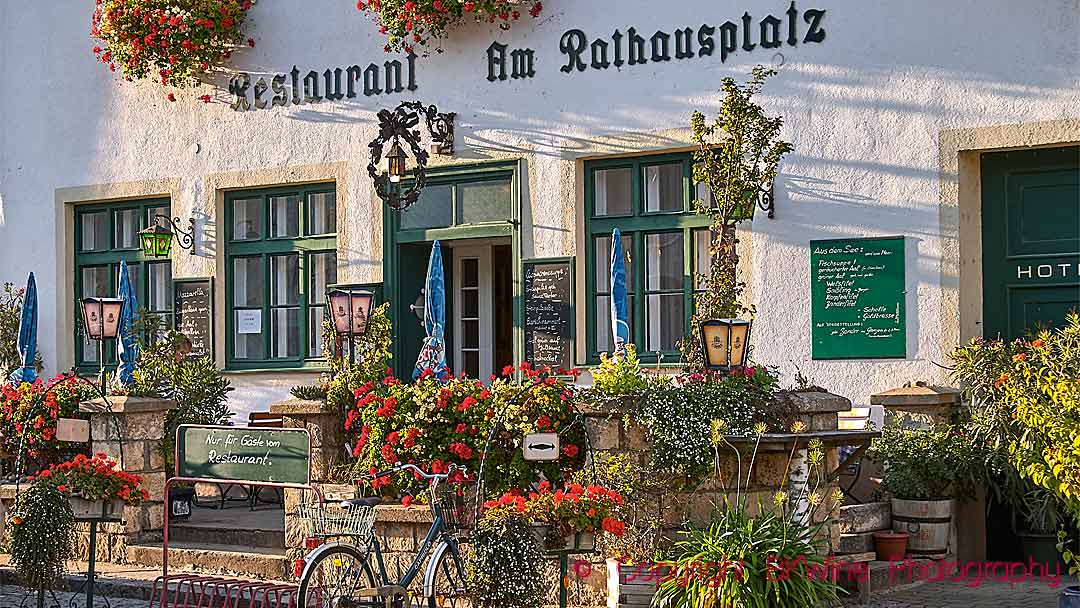
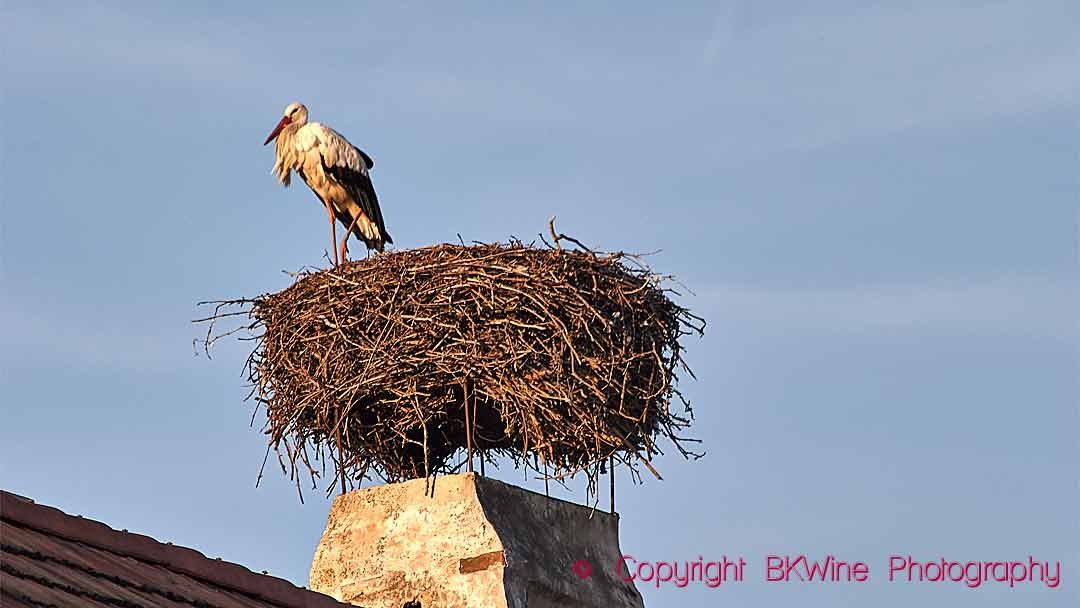
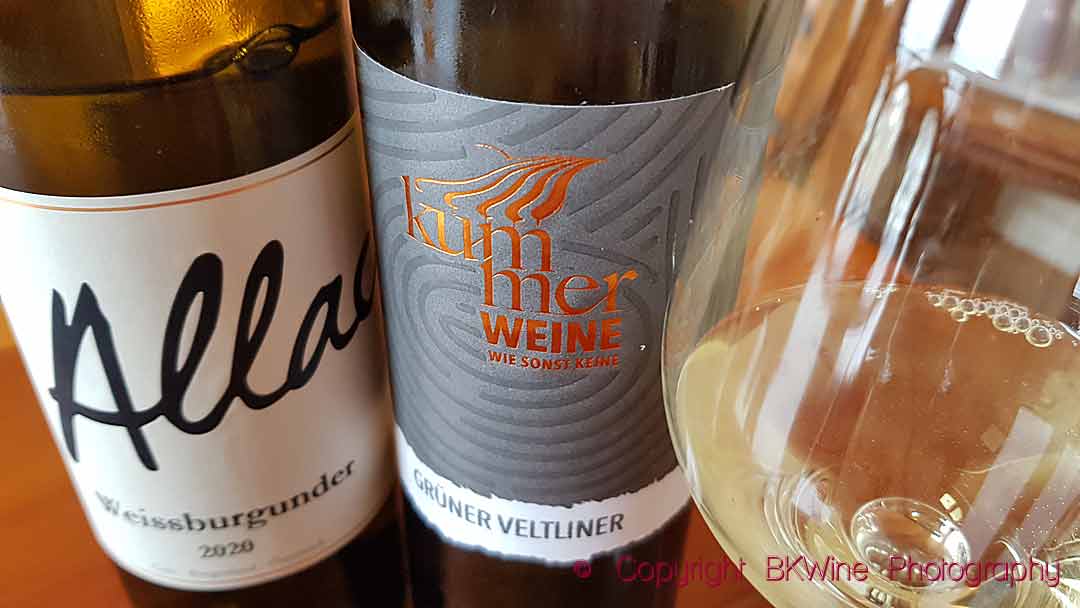

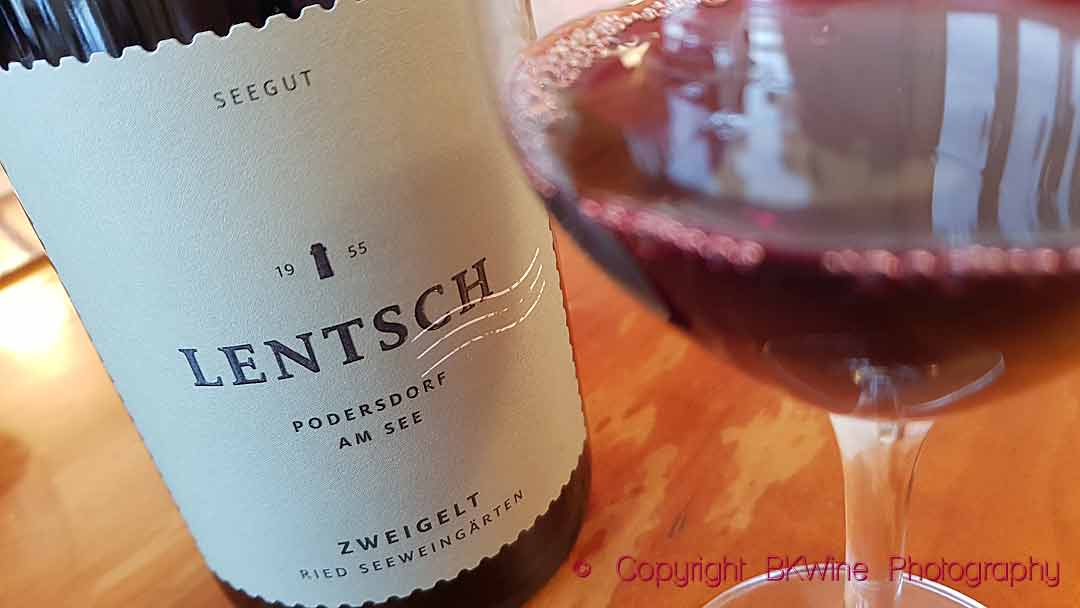

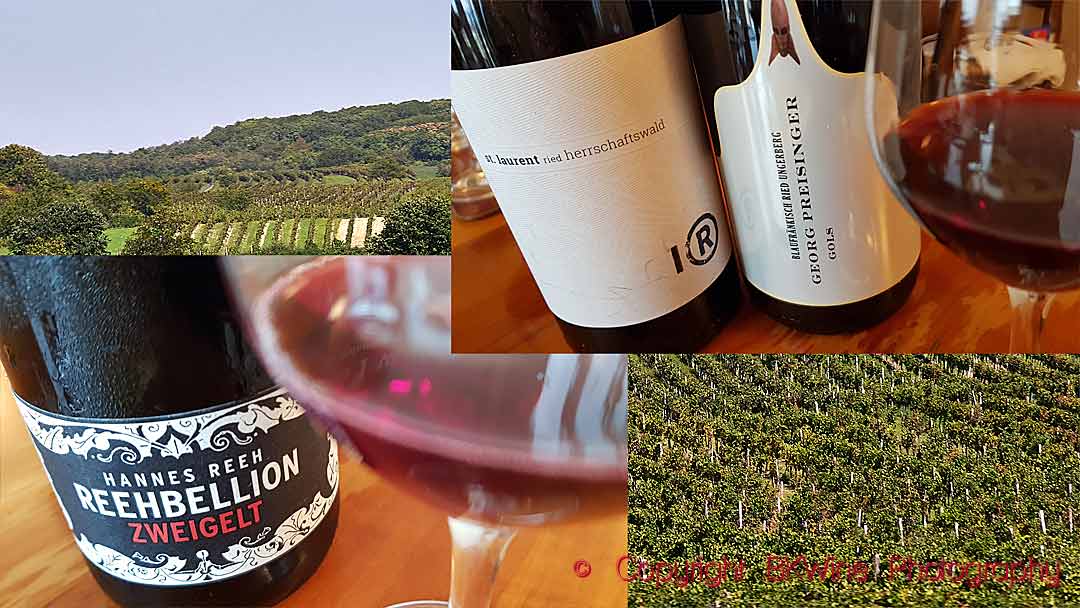









6 Responses
Thank you for the detailed article about the Austrian reds, especially for mentioning our Zweigelt Luckenwald Neusiedlersee DAC Reserve!
Okända marker för oss som varit med Britt lite överallt men inte i Österrike. Kanske ett nytt mål för en resa.
Ja, fint vinland och fina viner!
Great article, thank you very much for sharing our pride and love of work! We are delighted that our region and especially our mostly planted origin grape variety “Zweigelt” is attracting more and more attention internationally!
Great article, thank you very much for sharing our pride and love of work! We are delighted that our region and especially our mostly planted origin grape variety “Zweigelt” is attracting more and more attention internationally!
Thanks for the great wine description and for the great description of our area.
We are proud to live here.